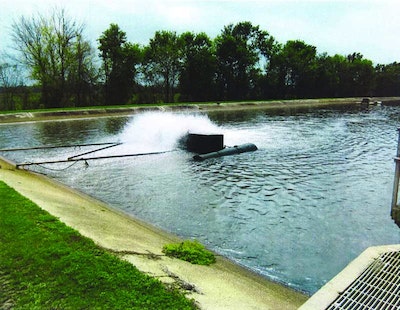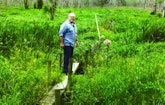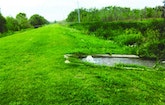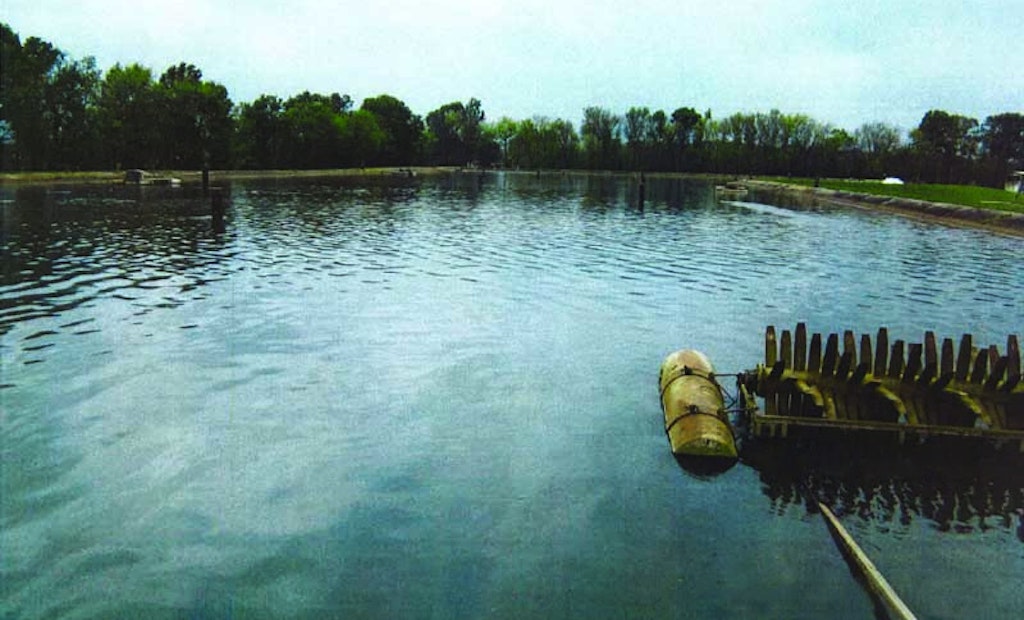Interested in Pumps?
Get Pumps articles, news and videos right in your inbox! Sign up now.
Pumps + Get AlertsThe Thibodaux Wastewater Treatment Plant is an aerated lagoon system with mechanical bar screens, high-flow trickling filters, and primary and final clarifiers.
The 8 mgd (design) facility sits on 570 acres next to more than 3,500 acres of swamp and forested bottomland known as the Barataria-Terrebonne National Estuary (BTNE), wedged between the Mississippi and Atchafalaya rivers in southern Louisiana.
On an average day, 2.5 mgd of treated effluent flows through the facility’s assimilated wetland into the BTNE to help improve the habitat for raccoons, deer, squirrels, bobcats, muskrats, mink and otters, plus frogs, turtles, alligators, egrets, herons and hawks. The habitat also nurtures an array of plants including maiden cane and bull tongue.
Enhancing life
After conventional treatment and UV disinfection, an 80 hp submersible pump (Pumpex Type K304) moves the effluent to the assimilated wetland 2 miles away. It passes through a 2-inch PVC pipe to a distribution system with 40 discharge points spaced 50 feet apart. The effluent then flows across a rock cascade into a tupelo gum cypress swamp.
“The natural wetlands are being enhanced by receiving effluent from the wastewater treatment plant,” says Joe Van Marke, city chemist. Van Marke, responsible for Thibodaux’s water and wastewater treatment plants, says the discharge site is perfect: A levee on the north and high ridges on the east and west sides form a nearly 200-foot-wide natural flow corridor that is identifiable and suitable for testing.
To determine the effectiveness of treatment and the impacts on the wetland, a biology professor at Nicholls State University in Thibodaux oversees regular monitoring of water quality.
“Our operators keep the grass mowed around the discharge points to make sure the discharge water is full-flowing,” Van Marke says.
Created by Congress in the late 1980s as part of the Clean Water Act, the National Estuary Program is administered by the U.S. EPA to help states develop plans to protect and restore the productivity of estuaries while supporting economic growth and recreation. The State of Louisiana committed to the voluntary program in 1990. In 1992, the Thibodaux plant was adapted so that the wetlands could be used for tertiary treatment. Before that, the swamp had been cut off from its supply of freshwater.
Bird haven
The Barataria-Terrebonne swamps and marshes contain nine of Louisiana’s scenic streams and are among the nation’s top three areas for birdwatching. Nearly 400 bird species have been spotted in the BTNE system. The southern half of the system contains estuaries that exchange water with the Gulf of Mexico, while the northern end contains freshwater wetlands and backswamps.
Van Marke says the wetland area has always been forested and that logging as a means of removing nutrients will likely continue. Future recreation in the wetland will be limited, since hunting and fishing are prohibited on the site. Directional drilling for mineral extraction will be allowed. Kevin Chiasson, plant supervisor, gives tours of the treatment facility.
The treatment plant is in a sugar cane field 60 miles southwest of New Orleans. Its outfall is the Pointe Au Chenes Swamp, about a mile from the plant. Shrubbery and trees hide the plant from a subdivision on its western side.
Van Marke says, “The city and our treatment plant do our best to support the efforts of the state by adding water suitable for plants, vegetation and wildlife in the wetlands.”









